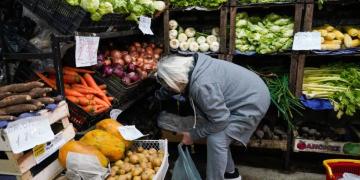Europa: NEPG issues stark warning: 2024 potato season in Europe marred by climate challenges and rising risks
The 2024 potato growing season in North-western Europe has been described as “difficult, stressful, risky, and expensive,” by the North-western European Potato Growers (NEPG).

In a press release, the organization highlights that climate change continues to exacerbate the difficulties facing potato growers in the region. New challenges are emerging as climate change continues to take its toll.
With a 7% increase in planted area in the EU-04 (560,000 ha, i.e. plus 37,000 ha), global production is expected to exceed the five-year average, reaching more than 22.7 million tons. Average yields per hectare will likely be similar to last year, according to the NEPG.
Overall quality is at this point in time reportedly good, with generally high underwater weight, but the issue remains that there is not enough length in many cases.
A Difficult Growing Season
The season was marked by an almost endless list of problems and challenges: an insufficient supply of seed initially led to higher seed prices and a heavy reliance on cut seed, which, due to poor management and further rainfall after planting, resulted in some dramatic consequences. In Belgium, more than 80 different varieties were cultivated for the processing industry, adding further complexity.
Heavy and constant rainfall during the planting season and throughout the summer resulted in plantings being spread out over a period of more than 10 weeks, particularly in Belgium and the southern Netherlands, with lesser impact in France and Germany. Most plantings took place under poor soil conditions.
Significant rainfall before, during, and after planting led to one of the largest late blight pressures ever recorded. New or evolving blight strains and the necessity to combine different active ingredients for each treatment led to increased spray costs and, in most cases, more frequent applications. Late-planted fields — some of which had not yet been planted or had not emerged by the time of the first treatments — presented additional challenges, the NEPG notes.
Harvest and Storage
In the coming weeks, growers must pay close attention to the harvest and storage phases. Less common varieties may not be suitable for storage due to low underwater weight and poor frying quality.
Common varieties may experience issues with bruising (black spot, due to high underwater weight), bacterial rot, or tuber late blight, depending on the weather conditions during the harvest.
Rising Processing Capacity
Increased processing capacity does not automatically mean increased demand for potatoes or higher sales of frozen products. Although the potato industry is performing well, growers must be aware that processing capacity, especially in North-western Europe, but also in North America, Asia, and South America, may be rising faster than the demand for processed products. Growers need to align production with demand rather than exceeding it.
Sustainable Production and Resource Preservation
Producers should seriously consider growing what they can sustainably, rather than only responding to the demands of processors. As climate change accelerates, potato cultivation is becoming increasingly risky and costly, placing growing pressure on the natural resources growers depend on: soil, water, and biodiversity.
To ensure future success, growers need to preserve these vital resources if they wish to continue farming in the years to come, according to the NEPG.
Source: North-western European Potato Growers (NEPG)
Image: Credit Catkin from Pixabay
Fuente: https://www.potatonewstoday.com/2024/09/19/nepg-issues-stark-warning-2024-potato-season-in-europe-marred-by-climate-challenges-and-rising-risks/




